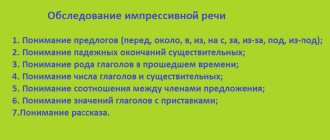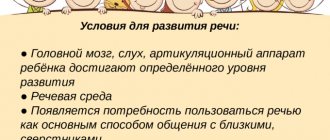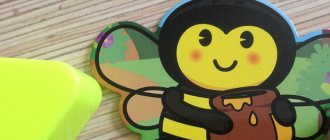Characteristics of A. N. Bernstein’s technique
The main goal of the “Sequence of Events” technique is to study the ability to build independent conclusions, make generalizations, maintain cause-and-effect relationships, as well as diagnose the level of intelligence.
It would be extremely illogical to be guided in life only by logic.
Leszek Kumor, Polish film critic and aphorist
The author of the technique, described in 1911, is the domestic scientist Alexander Nikolaevich Bernstein, a Russian psychotherapist, one of the founders and enthusiasts of the domestic psychoanalytic school. Being a convinced supporter of the idea of the promise of a new psychoanalytic teaching, he became the author of programs and methodological recommendations for the study of the intellectual sphere of man.
In modern psychological practice, instructions, recommendations and stages of practical implementation of experience have been somewhat changed, modernized and improved. Typically, the method is used to determine the degree of readiness of a child for school . A. N. Bernstein’s technique is also in demand in clinical psychology as a means of identifying mental retardation and mental retardation, as well as further treatment of developmental problems.
Application of the “Sequence of Events” technique for preschoolers and primary schoolchildren
Testing is usually carried out individually with each child, but can also be used in a small group. Live dialogue helps the child to activate communication skills and open up emotionally. The addition may be written work or drawing.
The collective form of testing allows you to create a relaxed atmosphere
The researcher says the following: “Look carefully, there are several pictures in front of you that depict the same event. But someone mixed them up and confused them. You need to figure out what story the artist wanted to tell. Start by identifying the first picture, put it here, then decide on the second and all the others in turn. After you have dealt with the pictures, write a story.”
The task includes two successive stages:
- Arrangement of picture cards.
- Oral logical narration based on them.
To complete the test, the child needs to establish the differences between individual plot fragments of the drawings and the logical sequence of the plot as a whole, by arranging the cards in the right order . A correctly composed combination of pictures proves that the child has an understanding of the plot, and an oral story demonstrates the ability to express the meaning in his own words.
After completing work with the drawings, the researcher records the selected combination (for example: 4, 5, 1, 3, 2) and the time spent on the layout in protocol records. Then asks the child to comment on the location of the cards according to their meaning. If the test taker makes a mistake, he is asked leading questions in order to correct the mistakes made, and it is important to monitor his emotional and intellectual reaction.
For testing to be informative, it is important to conduct it in a friendly and calm environment.
Questions help to understand the reason for the erroneous story. Perhaps the child lacks the level of erudition or vocabulary, but the general meaning of the events is perfectly grasped.
Sometimes the reasons for failure to pass the test can be personal psychological characteristics: complexes, fear of failure, discomfort in the new environment. The age of the person being tested is also important: what is considered a good level for a six-year-old child will already be assessed as weak for a seven-year-old child, for example, the ability to compose a story based on leading questions . Questions and answers are also recorded in the protocol. The skills of competent and effective formulation of questions depend on the skill level of the experimenter.
A situation may arise when, during communication, the child still does not understand what needs to be done. Then he is simply shown the correct version of the first picture and asked to continue trying to build the further sequence of events himself. That is, the subject is given a second chance to take the test.
If the efforts remain unsuccessful, then the psychologist himself explains the necessary algorithm for solving the problem. Then, after mixing all the cards, the child is again asked to reconstruct the course of events. A new series of pictures to consolidate the acquired experience is offered to him only after he has completed the task . Thus, all the steps used to detect logical errors and achieve a positive result are recorded in the protocol.
A psychologist can help a child navigate the exercise by asking leading questions.
Sequence of events. N.A. Bernshtein.
Sequence of events. N.A. Bernshtein.
Target:
Determine the ability for logical thinking, generalization, the ability to understand the connection of events and build a consistent conclusion.
Material:
To conduct the experiment, a series of plot pictures (3-6 pictures) are needed, which depict the stages of an event.
There are series suitable in content for children (“Wolves”, “Well”, “Boats”, etc.), as well as series for adults (“Wheel”, “Drunkard”, “Hunter”, etc.).
There are several options:
Option 1: A series of 3-4 pictures reflecting the life of children.
Option 2: A series of pictures with emotional and semantic overtones. (Wechsler or Bidstrup).
Instructions:
Starting from the age of 5 using a series of pictures of the 1st option. For children of primary school and older - 2nd option.
Pictures connected by a plot are randomly placed in front of the child. The child must understand the plot, build the correct sequence of events and compose a story based on the picture.
“Look, there are pictures in front of you with some event depicted, focus your attention. The order of the pictures is mixed up, and you have to figure out how to swap them in order to make it clear what the artist drew. Think, rearrange the pictures as you see fit, and then use them to compose a story about the event depicted here.”
The task consists of two parts:
1) laying out the sequence of events in pictures;
2) an oral story about them.
After the child has laid out all the pictures, the experimenter writes in the protocol (for example, 5, 4, 1, 2, 3), and then asks the child to tell in order what happened. If a child makes mistakes, he is asked questions to help identify the mistakes made.
The subject is shown a pack of mixed cards and told: “Here, all the pictures depict the same event. We need to figure out where it all started, what happened next and how it ended. Here (the experimenter indicates the place) put the first picture, on which the beginning is drawn, here - the second, third..., and here the last,”
After the patient has laid out all the pictures, the experimenter writes down in the protocol how he laid them out (for example: 5, 4, 1, 2, 3), and only after that asks the patient to tell in order what happened. If the patient has decomposed incorrectly, he is asked questions, the purpose of which is to help the patient identify contradictions in his reasoning and identify mistakes made.
The ability to ask these questions depends on the qualifications and experience of the experimenter. These questions and answers of the patient are recorded in the protocol, as well as the patient’s actions to correct the layout of the paintings. If the questions fail to bring the patient to a correct understanding of the sequence of events depicted, the experimenter simply shows him the first picture and asks him to sort it out again. This is the second attempt to complete the task. If this is also unsuccessful, then the experimenter himself tells and shows the patient the sequence of events and, having mixed all the cards again, invites him to lay them out again - for the third time.
If the patient correctly identified only on the third attempt. Consistency, it is useful to offer him another series of the same technique in order to find out whether it is possible to “transfer” a hard-learned way of reasoning.
Processing the results:
Conclusions about the level of development.
High
– the child independently found the sequence of pictures and composed a logical story.
If the sequence of drawings is found incorrectly, the subject nevertheless composes a logical version of the story. Average
- the child correctly found the sequence, but could not write a good story.
Compiling a story using leading questions from the experimenter. Low
– if: the child could not find the sequence of pictures and refused the story; - based on the sequence of pictures he himself found, he composed an illogical story; - the sequence compiled by the child does not correspond to the story; - each picture is told separately, on its own, not connected with the others - as a result, there is no story; — each picture simply lists individual items.
When interpreting the results of the study, you should pay attention to how the patient reacts to the experimenter’s leading questions and critical objections, whether he “picks up” this help or does not understand it.
In cases where, due to an incorrect drawing sequence, the subject composed a logical version of the story, it is considered that the task was completed correctly.
If the child correctly established the sequence of pictures, but could not compose a story, it is necessary to ask leading questions. If the child does not have enough vocabulary to explain, and tasks to describe, then questions are asked that are recorded in the protocol. In this case, the task was completed at an average level.
If you could not compose a story even with the help of leading questions, then the task is unsatisfactory.
The subject is considered to have failed the task if:
- Couldn't find the sequence of events and abandoned the story
- Based on the sequence of pictures he himself found, he composed an illogical story.
- The sequence compiled by the test subject does not correspond to the story (but with the exception of those cases when the child, after a leading question, changes the sequence and the corresponding story).
- Each picture is described separately, on its own.
- Each picture simply lists individual items.
If option 4-5, then a thorough check of intellectual abilities is necessary.
Recently, to establish the sequence and meaning of events, series composed of caricatures have been used (“At Home and at Work,” “A Year Has Passed,” “Who Worked and Who Was Tired,” “Optical Illusion,” etc.). The advantage of these series is that they are more difficult to understand and are suitable for studying more intellectually developed and intact patients. At the same time, the center of gravity of the task when using these series seems to shift from establishing a strict sequence of stages of an event (sometimes this sequence does not need to be established precisely) to understanding humor, that is, the meaning of the cartoons as a whole.
Cartoon sequences of events are used with some modification in the order of the experiments. The patient is first asked to establish the sequence of events himself, and then, if he cannot do this, they are offered a card with the name of the series. The title is usually composed in such a way that it “sheds light” on the meaning of the entire series.
Protocol
| Series title and experimenter's notes | Layout | Patient's explanation |
Features of stimulus material
The experimental material is plot pictures shown to the subject in a deliberately disrupted sequence. The child’s task is to reconstruct a logical combination of pictures, accompanying his solution with an oral story. A verbal description allows you to determine the level of speech development of a future first-grader.
Main criteria for determining the level of speech development:
- consistency;
- connectivity;
- competent construction of sentences;
- sound purity of pronunciation;
- correct intonation;
- emotional coloring of the story.
There are age-specific and semantic series of stimulus material, which include 3-6 pictures depicting the plot. Plots in the logic of complicating the understanding of the hidden meaning can be presented to children from 5-7 years old to 9-10 years old:
- “Simple” - offers pictures with obvious developments of events - from fragments you can easily establish cause-and-effect and temporal relationships. For example, a cat who is trying to get a mouse out of a milk bottle.
- “Complex” - contains illustrations with subtext and hidden meaning of the plot, when it is required to attract knowledge about the patterns of natural phenomena, the surrounding reality, to draw conclusions based on an understanding of the details, posture and facial expressions of the depicted characters.
Photo gallery: pictures for testing
A simple “Snowman” plot with obvious developments, for children 3–3.5 years old
A comic strip with an obvious cause-and-effect and temporal relationship “The Crow” is used for testing children of primary school age
For children 7–8 years old, this sequence should not be difficult. The “Picture” plot is used when working with children 5.5–6 years old. Bidstrup’s comic “Flower Flower” can be used as a way to test children 4.5–5 years old. A painted story with the subtext “Gardener”. » suitable for children of primary school age
Compiling stories based on a series of plot pictures
Svetlana Shashkova
Compiling stories based on a series of plot pictures
Compiling stories based on a series of plot pictures.
D/i “Don’t yawn, pick up the right picture”
Goal: learn to reproduce the sequence of events.
Progress of the game. There is a series of plot pictures on the table, the children look at them. The teacher reads the story and gives everyone one picture-episode. The teacher repeats the story, and the children must show the corresponding picture.
D/i “Pick a picture”
Goal: learn to reproduce the sequence of events.
Progress of the game. The teacher gives the children subject pictures, and he himself shows the plot pictures, accompanying them with a story. Children must match subject pictures to this series of plot pictures.
D/i "Chain"
Goal: learn to reproduce the sequence of events.
Progress of the game. Children are given one initial picture from each series, and the rest are mixed. Opening one card at a time, the teacher asks: “What is shown here? (for example, a sick boy is lying in bed) Who should I give this card to? Each child must look at his first card and determine whether the card shown by the teacher matches it. Having received all the cards in their series, children put them in the right order and make up a story based on them.
D/u “Repeat it yourself”
Goal: learn to reproduce the sequence of events.
Progress of the game. The teacher reads the story and places pictures on the typesetting canvas. Then he takes them down and invites the children to arrange the pictures themselves and repeat the story. In case of difficulties, you can ask guiding questions.
D/u “Tell me from the picture”
Goal: with the help of questions, direct the child’s attention to the process of unfolding actions.
Progress of the game. Scene pictures are placed on the typesetting canvas. V-l asks children questions about their content, helping to establish cause-and-effect relationships.
D/i “pictures are lost”
Goal: learn to reproduce the sequence of events.
Progress of the game. Children are given pictures from one series in any order. The teacher draws up a story plan in accordance with which the children must arrange the pictures. After that, the children make up a story based on the pictures.
D/i “Continue the story”
Goal: learn to reproduce the sequence of events.
Progress of the game. Children are given a series of pictures to determine their sequence. V-l begins the story based on the first picture, the children must continue it based on their pictures.
D/i "Speech Lotto"
Goal: learn to reproduce the sequence of events and demonstrate verbal creativity.
Progress of the game. Children receive one picture each, and each one tells what is drawn in his picture. One child in conclusion gives a complete story based on all the pictures. After this, the children come up with names for the characters in the story.
D/i “Tell me from the picture”
Goal: learn to reproduce the sequence of events.
Progress of the game. Each child receives a series of pictures. His task is to select picture episodes in sequential order and compose a story based on them.
D/i "Confusion"
Goal: learn to reproduce the sequence of events.
Progress of the game. All pictures are mixed and each child is given 2-3 of them. Children look at the pictures and arrange them in such a sequence that they can be used to compose a coherent story.
D/i "Memories"
Goal: learn to reproduce a sequence of events from memory.
Progress of the game. Children look at a series of pictures. Set their sequence. Then they turn the pictures over and tell their contents from memory.
D/i “Answer my question”
Goal: learn to reproduce the sequence of events, be able to ask questions based on pictures.
Progress of the game. Having received a series of pictures, children make up a story and learn to ask each other questions about the content of the pictures.
D/i “Voicing a cartoon”
Goal: learn to reproduce the sequence of events, master the skills of monologue and dialogic speech.
Progress of the game. Children look at a series of pictures. They compose a story, come up with lines and dialogues for this plot.
D/i “What happened before? (or then)"
Goal: learn to reproduce the sequence of events, show creative imagination and thinking.
Progress of the game. Having compiled a story based on a series of pictures, the guys come up with a name for it. They also supplement it with a previous or subsequent event.
D/i "Images"
Goal: learn to reproduce the sequence of events, master the skills of monologue and dialogic speech, learn to convey the actions of the characters in facial expressions, gestures, and pantomime.
Progress of the game. After compiling a story based on a series of plot pictures, children, with the help of v-la, convey its content in faces.
Interpretation of results and conclusions
The method provides a three-stage gradation of levels for assessing test results:
- Tall - the child completed the test completely, independently found the correct combination of pictures and composed a coherent, grammatically adequate story.
An alternative, original perception of the plot is allowed, but provided that the child consciously argues for his proposed interpretation.
- Medium - the subject overcame the first stage of correctly arranging images, but experienced difficulties in the process of building a logically coherent story, which he was able to compose only with the help of a psychologist.
- Low - the child was unable to establish the sequence of pictures and compose a story.
There may be several reasons why the subject failed to complete the task:
- Each picture is perceived as autonomous, not connected with others. In this case, it is impossible to build a story.
- The suggested sequence does not match the verbal description.
- Individual details in each drawing are captured without the necessary level of generalization.
- In addition to the sequence he himself found, the subject offers an illogical story.
Inelasticity, inflexibility of thinking, problems with comprehension and mental development, as a rule, manifest themselves in the fact that the test taker easily passes the easy series and is not able to evaluate the more difficult one . A problem can also be the number of pictures, which can be overwhelming for a child. Then it will be necessary to reduce the volume of stimulus material to a minimum (from 6 to 3). The researcher may encounter persistent repetition of the same error in the same place. Such “stuckness” signals serious problems in the subject’s brain, even organic lesions.
Some children willfully invent their own storylines, absolutely not noticing the content of the proposed drawings, not reacting (or reacting aggressively) to reasoning and leading questions, critical objections of the experimenter, and behave inappropriately in response to the offered help. This is how uncritical thinking manifests itself - one of the possible symptoms of mental retardation.
Special attention should be paid to the features of oral speech. The development of speech and thinking are genetically related to each other, since the development of thinking is largely predetermined by the development of speech.
Parents themselves can activate the child’s mental activity by jointly reading aloud daily works of world literature appropriate to the child’s age, discussing the adventures of the main characters and plot collisions. The tradition of family reading in an atmosphere of home comfort, an emotional atmosphere of mutual understanding and positivity carefully created by parents will help awaken an inquisitive mind in a child and feel the joy of knowledge and learning.
Diagnosis of intellectual maturity will help determine whether the child’s logical thinking and the ability to consistently reproduce events are developing correctly. It will also encourage stylized training of individual skills that are important for the child’s successful education at school and self-realization in society.
If a child finds it difficult to correctly arrange sequential pictures (series of plot images), then he needs to be helped to learn this. This will be very useful not only for the development of memory, but also thinking.
Getting ready for training:
We select a series of plot pictures (from 2 to 5) depicting the stages of an event. Here is the requirement: the images must be clear and correspond in content to the age of the child. You can use “Drawings in Pictures” by Radlov, “Funny Stories” by Suteev, Vorobyova.
Sequential pictures: training
A. Show the child the randomly mixed cards and say: “Here, all the pictures show the same story. You need to sort them out in order, where it all began, what happened next, and how it ended. Here (indicate the place) you should put the first picture, where the beginning of the story is drawn, here - the second, here - the third, here - the last.” Usually pictures are arranged from left to right, since we read and write from left to right.
When the child puts all the pictures in order, write down their order. Then ask him to tell you in order what happened. If the sequential pictures are arranged incorrectly, ask your child questions. Their goal is to establish contradictions in reasoning and identify mistakes made.
B. If your questions do not help the child understand the events depicted, then simply show him the first picture and offer to arrange the remaining pictures again. This will be the second attempt to complete the task. If it ended unsuccessfully, then tell and show yourself how to correctly arrange the sequential pictures. Then mix all the cards again and invite the child to put them in order.
B. If the preschooler establishes the correct sequence of pictures only for the third time, offer him another series of the same complexity. The procedure is repeated with other sequential pictures to find out whether the child has understood the reasoning method so much that he can now repeat it without errors. In teaching, this is called “transferring” the learned method of reasoning to a similar situation. This skill greatly improves a child’s learning ability.
When completing a task the first time or after leading questions from an adult, the child is offered a new, more complex series of sequential pictures.
What should you pay attention to?
1. Is the child able to establish cause and effect, understand the sequence of events that are clearly presented in a series of pictures.
The presence and good development of this ability by the end of preschool age indicates that the child is ready (at the level of thinking) for systematic learning at school.
2. Pay special attention to the child’s explanations and reasoning:
a) did he correctly identify the main characters in the pictures, established the relationships between them, b) did he understand the situation surrounding the characters?
It is important how many consecutive pictures the child understands, how many pictures he can keep in his field of vision - 4-5 or only 2.
How many sequential pictures can a preschool child generally process?
| Grade | 5 years | 6 years |
| High level | 4 pictures | 5 pictures |
| Average level | 3 pictures | 3-4 pictures |
| Low level | 2 pictures | 2 pictures |
It is also important what level of difficulty the child copes with; whether he repeats mistakes when re-laying out successive pictures or makes corrections; does he perceive the adult’s critical comments - does he change his actions, correct mistakes, does he “pick up” help or, conversely, does not understand it.
Pay special attention to your child’s oral speech when explaining the sequence of events. Here you need to pay attention
- on the coherence of speech,
- its grammatical correctness,
- vocabulary (how often does the child look for words when telling stories)
Parents often underestimate the last point. They see only violations of sound pronunciation, and even then they do not always attach importance to this, believing that they will “speak out” over time. But time these days (please forgive the tautology) flies quickly.
And one last thing. Sequential pictures are an effective way to develop memory, speech, thinking, intuition (visual “grasping”). A good basis for successful learning is created. The site Non-standard children wishes you success!
0








